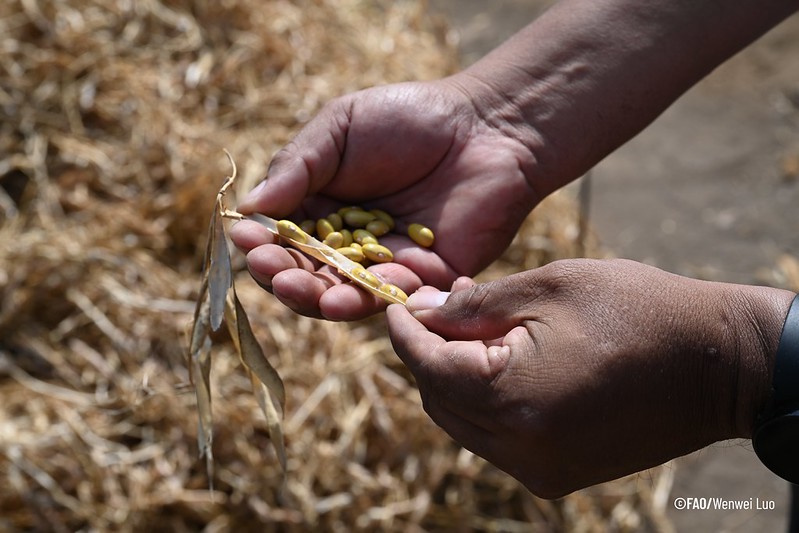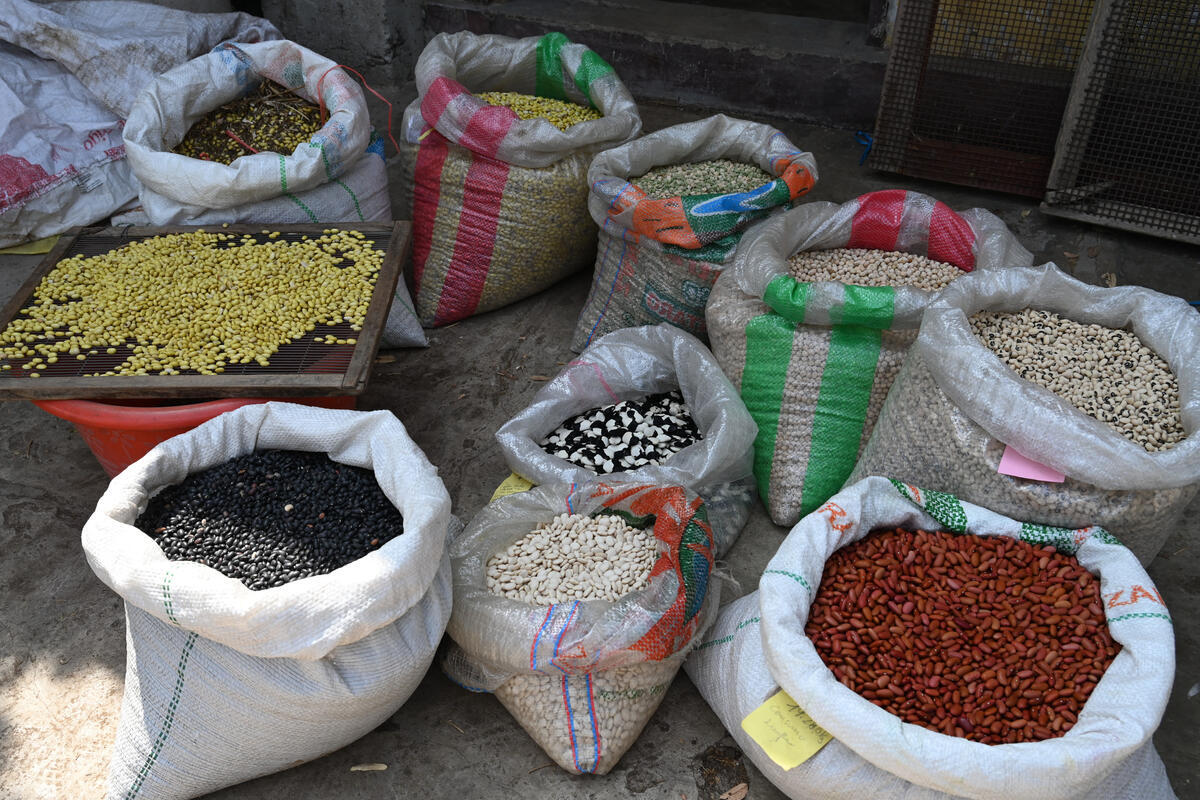
The power of pulses: Nourishing people, animals and the environment
Pulses - such as tarwi, beans, chickpeas, and dry peas - support the health of plants, animals, people and the environment. Their unique properties make them strategic crops for transforming agrifood systems in line with the One Health approach.
Present in culinary traditions all around the world, pulses show how food choices can nourish people while protecting the planet.
This Sustainable Gastronomy Day, here’s why these small seeds have a big impact.
They protect plant health
Pulses help other crops thrive. Their roots host nitrogen-fixing bacteria that enrich the soil and improve its fertility, reducing the need for external inputs. Some species can also facilitate access to soil-bound phosphorus, a nutrient essential for plant to grow. When included in crop rotations or intercropping, pulses help break plant pest and disease cycles and support soil biodiversity. This, together with their broad genetic diversity, helps create productive, healthier, more resilient farming systems.
They support animal health
Pulse crops provide valuable by-products that can be used in animal feed, which do not compete with human food. Incorporating these by-products into the animals’ diet increases the nitrogen content of the feed, thereby enhancing its nutritional quality. By improving the quality of feed for ruminants, pulses contribute to lower methane emissions. When grown on integrated farms, pulses and livestock complement each other – animal manure nourishes the soil with nutrients essential for crops to thrive, and crop by-products support a high-quality diet for animals. This creates a healthier system that optimizes on-farm nutrient management.


They enhance human health through nutrition
Packed with essential nutrients, there are many health benefits of pulses. For communities where animal protein is costly or inaccessible, they offer an affordable source of protein while also being rich in vitamins and minerals. Their high fibre content supports digestion, lowers cholesterol, and helps manage blood sugar levels. Pulses are vital for healthy diets, and health authorities recommend their regular consumption for the management of non-communicable diseases like diabetes and heart conditions - making them a smart dietary choice for people of all ages.
They help safeguard the environment
Producing pulses requires far less water and energy than many other protein sources. For example, 1 kilogram of lentils needs only 1 250 litres of water, compared to 13 000 litres for beef. They are also good for biodiversity - these crops improve soil structure, support microbial life, and help reduce the need for external inputs. Pulses also contribute to both climate change mitigation and adaptation by lowering greenhouse gas emissions and with many species being tolerant to water stress and high temperatures.
